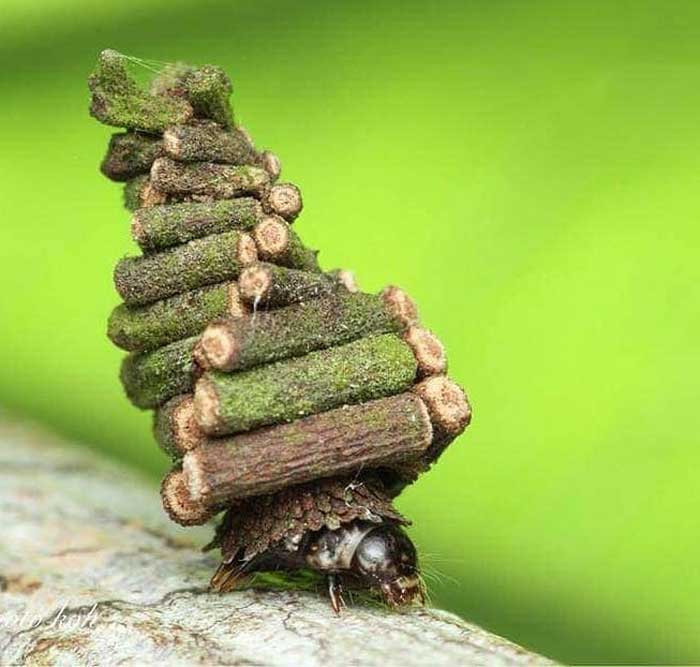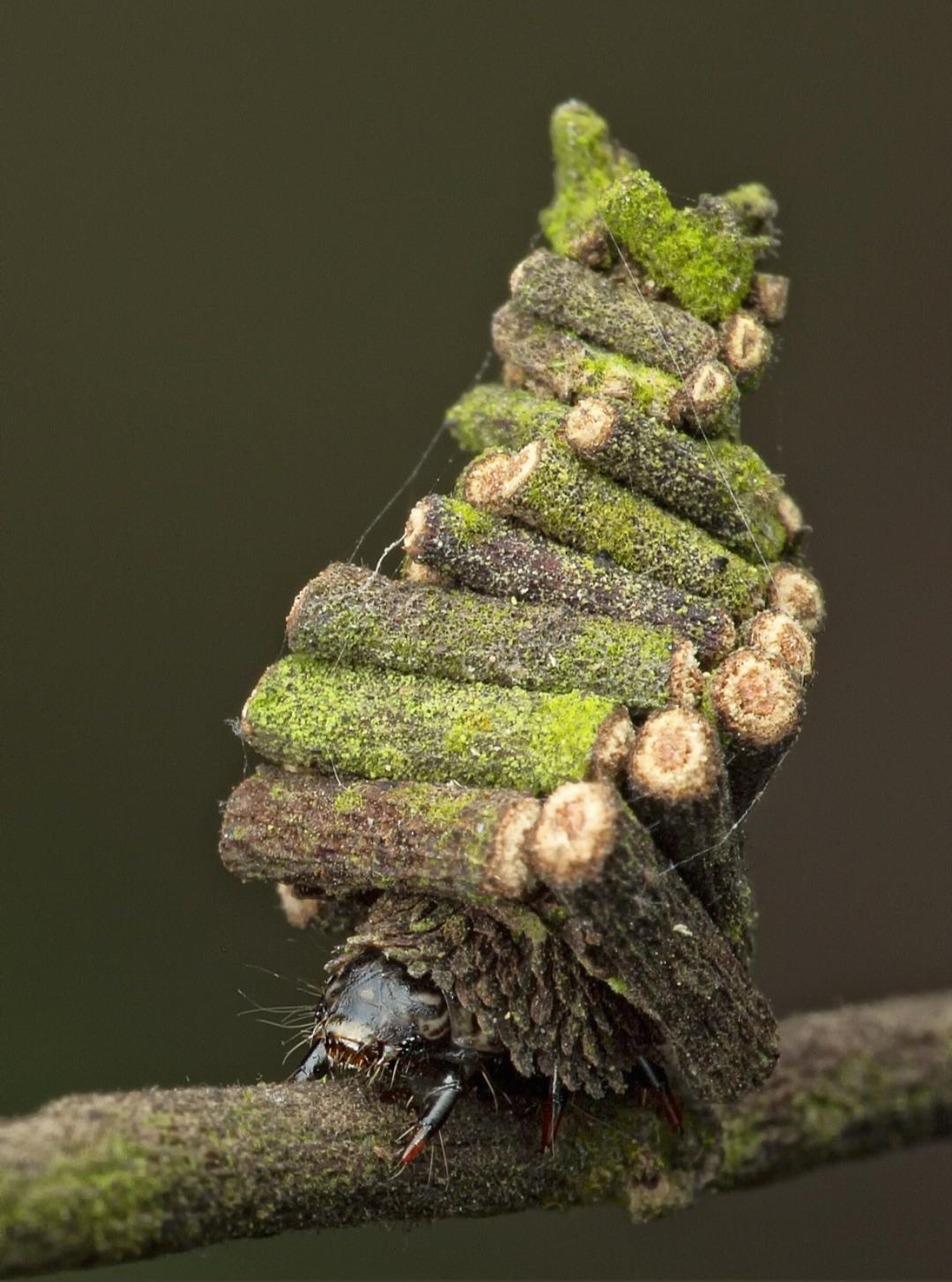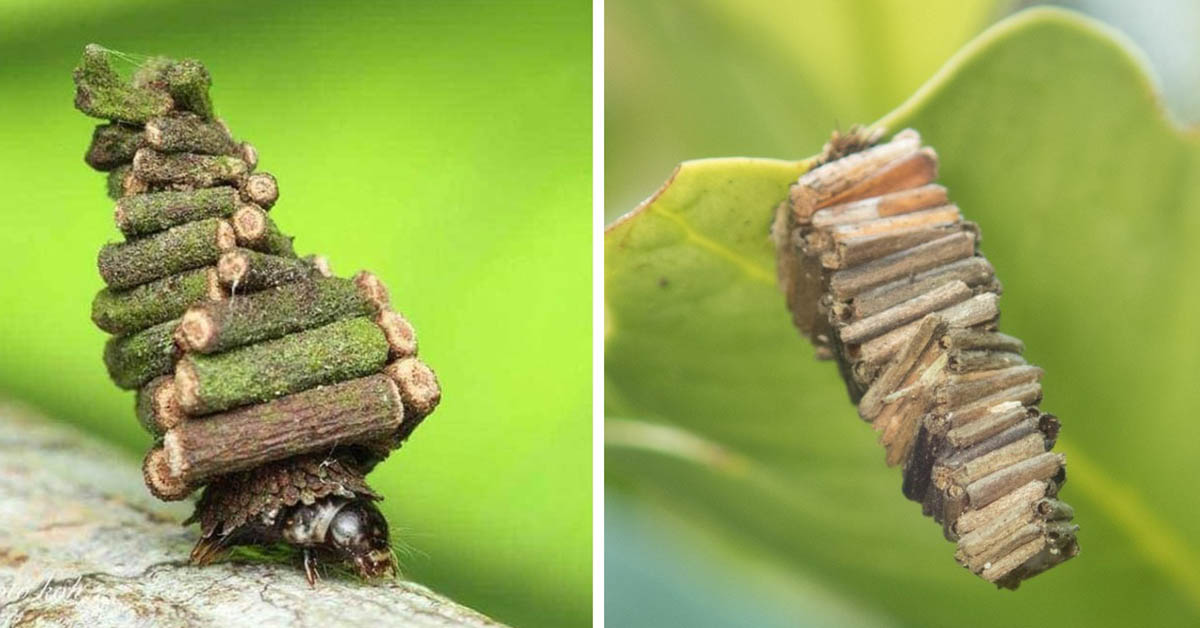The case moth, which is also called the bagworm moth, is in the family Psychidae. It is a butterfly or moth and is in the order Lepidoptera. The bagworm moth family is pretty small, with only 1350 species. However, you can find them all over the world. Their name comes from the safe “homes” they make.
Some kinds of bagworm moths also eat small arthropods, even though most of them eat plants and their leaves.
Unfortunately, trees and plants that are home to bagworms get a lot of damage because the insects eat the leaves and often leave the plants totally bare.

The bagworm moth’s caterpillar doesn’t waste any time after hatching. It quickly makes a silk cocoon around itself and strengthens it with plant stems, leaves, and other parts. The end result is a small building that looks a lot like a tiny house. The locally scavenged building materials give it a natural hideaway from nosy people, and they make a safe shell that’s hard for animals to get through.
The case of each species of bagworm moth looks different because they use different kinds of materials based on what they can find when they start building their tiny homes. The case of the animal, rather than the animal itself, can help you tell the different kinds of bagworm moth apart. Different shapes and sizes are available. Cases are usually between 1 and 15 centimetres long, and some may look very simple, while others may look like a tent or a log house. Bagworms get bigger as they get older and add new branches or other things to their homes.
 In most cases, caterpillars’ cases are connected to trees, bushes, or rocks. However, they can also carry their cases with them when they are hunting. The way they move when they drag their case with their heads out at the top looks like a turtle. On the other hand, if the caterpillar feels threatened, it can close all the holes in the case, keeping itself safe.
In most cases, caterpillars’ cases are connected to trees, bushes, or rocks. However, they can also carry their cases with them when they are hunting. The way they move when they drag their case with their heads out at the top looks like a turtle. On the other hand, if the caterpillar feels threatened, it can close all the holes in the case, keeping itself safe.
They live pretty short lives and spend most of their time in their well-protected case. When they are fully grown and ready to mate, male bagworm moths leave their cases. But females stay in their little homes for the rest of their lives, even after they have pupated and become adult moths.
Even though the tiny homes that bagworm moths build for themselves are very cool, they are mostly seen as bugs because they hurt trees, shrubs, and other plants.
It’s interesting that things are very different on Madagascar. Watling trees are used to breed and grow a type of bagworm that is native to the country because their pupae are very high in protein.



